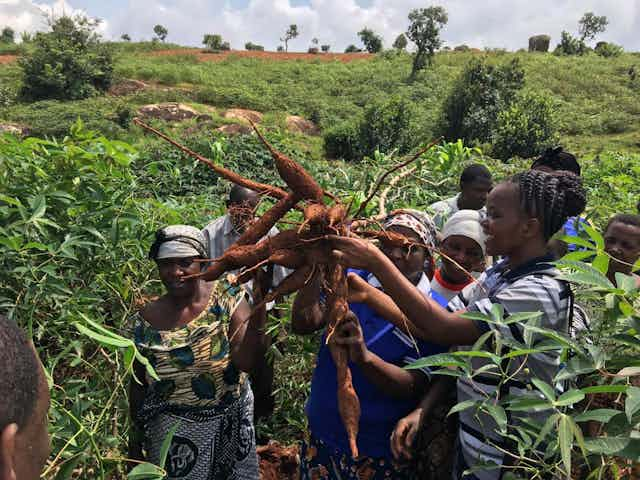When the deadly Ebola virus struck West Africa last year, one thing that became clear was that the region lacked access to quick diagnostic tools that could help identify those infected and help contain the virus’s spread.
As the world swung into action to combat the emergency, one crucial factor that helped to curb the epidemic was the arrival of backpacks containing portable genetic sequencing computers – a technology not readily available in the affected countries.
What has that story got to do with world hunger, beyond the fact that both hunger and disease are featured in the United Nations’ Sustainable Development Goals?
If we can bring the same technologies to bear against crop diseases as well as human ones, we can help eradicate hunger – a less newsworthy and more slow-burning problem than Ebola, but far more deadly in terms of the human toll.

Our research focuses on cassava, a staple food for some 800 million people in East Africa (and described by philanthropist Bill Gates as the world’s most interesting vegetable).
One of the biggest threats to cassava and the farmers who grow it are whiteflies, which transmit deadly plant viruses that cause the edible cassava roots to rot from the inside.
These “Cassava Brown Streak Viruses” can destroy entire crops. But typically the farmer does not realise the crop is lost until harvest time.
Our team has found that there are more species of these viruses than first thought, and possibly more still to be found.
Right now, to identify the virus species that are infecting an individual cassava plant, samples have to be transported to specialised laboratories across considerable distances – often to another country, or even another continent.
This is where rapid field genomics comes in. With access to fast genetic sequencing, similar to that used to stop the spread of Ebola, farmers can find out whether their cassava cuttings are infected before they are planted. Then they won’t have to worry if the cassava is healthy or not when it is time to eat them and ward off the hunger season.
Fighting off hunger
If we are going to get to zero world hunger, saving the cassava will be crucial. So how do we do it?
At a UN Solutions Summit held the day after the goals were adopted, we were among 14 innovators chosen to discuss our proposed solutions to the 17 global goals. Here’s what we suggest for protecting cassava in East Africa.
We need funding to help equip labs in East Africa with supercomputing (even if they are small clusters) and travel funding for me to take a crew of really awesome computational scientists to put on workshops for collaborators in the region.
Before that, we also need to increase funding for PhD student scholarships for East African scientists – so that these countries have people with the expertise needed to operate the computers.

In the longer term, a network of mobile diagnostic labs for cassava whitefly disease needs to be rolled out to farmers throughout the region, much like the response to the Ebola outbreak in West Africa. These farmers need diagnostics to see if their plants are sick, and identify the specific virus and whitefly in their field and region.
If we can save the cassava, then genomic sequencing, supercomputers and other tools used to do it could potentially be used to fight similar outbreaks in countries all over the world that are struggling with pests and disease that threaten their food supplies.
Bringing the strongest women on the planet, the smallholder farmers in East Africa, into the light will only help the fight to ensure that people have enough food right around the globe.
Country team leaders on the Cassava Diagnostic Team contributed to the research and ideas presented here.


